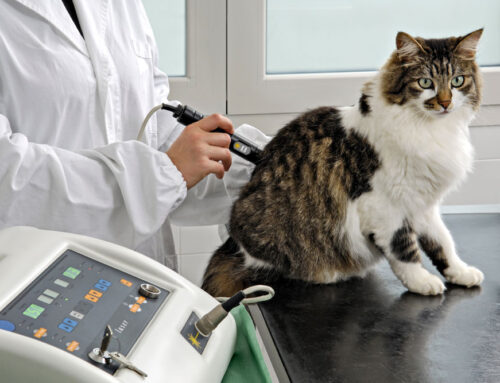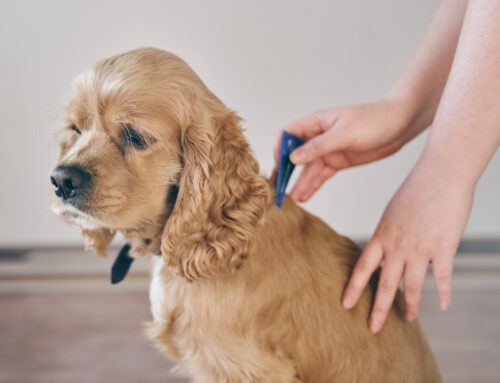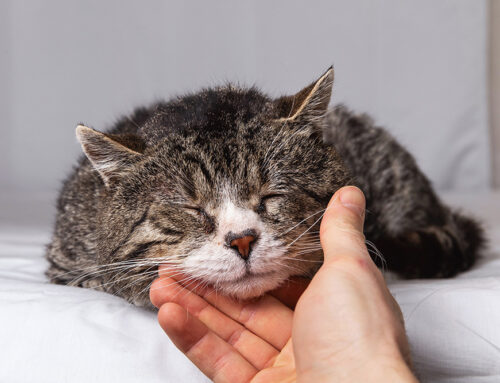Coughing, sneezing, wheezing—it’s always concerning when your pet sounds off. While occasional respiratory noises may be normal, persistent or severe symptoms can signal more serious health concerns that require veterinary attention. At Woodland Springs Veterinary Hospital in Fort Worth, Texas, we’re here to help you understand what’s normal, what’s not, and how to respond when your pet is having trouble breathing.
In this guide, we’ll explore:
- Common causes of respiratory symptoms in pets
- When to seek veterinary care
- Diagnosis, treatment, and preventive strategies
By the end, you’ll feel more confident recognizing symptoms—and know exactly when to reach out for help.
What’s Causing Your Pet’s Respiratory Symptoms?
Respiratory issues can range from minor irritations to signs of a serious medical condition. Below are the most common causes of breathing trouble in pets.
Coughing in Pets: When to Be Concerned
Coughing is one of the most common respiratory symptoms, especially in dogs. It can stem from a range of conditions:
- Kennel Cough – A contagious condition often picked up in places like kennels, daycare, or grooming facilities. Learn more about kennel cough.
- Canine Infectious Respiratory Disease Complex (CIRDC) – A group of viral and bacterial infections that often overlap. Explore CIRDC with this AVMA guide.
- Heart Disease – Chronic coughing may be one of the first warning signs of congestive heart failure. Understand heart disease in pets.
- Tracheal Collapse – Particularly common in toy and small breeds, this condition causes a honking cough. More on tracheal collapse in dogs.
- Environmental Allergies – Dust, smoke, pollen, or strong fragrances can all irritate a pet’s lungs. Allergy management tips from Purdue.
Contact your vet if your pet:
- Coughs for more than a week
- Struggles to breathe or has blue/pale gums
- Loses energy or appetite along with the cough
Sneezing in Pets: Not Always Innocent
An occasional sneeze may be nothing—but repetitive or intense sneezing could point to:
- Upper Respiratory Infections (URIs) in Cats – These are especially common in shelters and multi-cat households. ASPCA Pro’s guide to feline URIs offers helpful insight.
- Foreign Objects – Grass, dust, or debris may irritate the nasal passages.
- Dental Disease – Untreated oral infections can travel upward into the sinuses.
- Environmental Allergies – Just like in dogs, allergens can trigger sneezing fits.
Veterinary attention is warranted if:
- Sneezing is constant or worsening
- Nasal discharge is thick, yellow/green, or bloody
- Breathing seems labored or your pet is lethargic
Wheezing in Pets: Take It Seriously
Wheezing—often a high-pitched, whistling noise—can indicate narrowed airways or inflammation:
- Feline Asthma – A chronic respiratory condition that causes inflammation and constriction of the airways. Learn more from Cornell’s Feline Health Center.
- Brachycephalic Obstructive Airway Syndrome (BOAS) – Flat-faced breeds like Bulldogs and Pugs are especially vulnerable to this condition. Explore BOAS in depth.
- Pneumonia or Bronchitis – Serious infections that can lead to oxygen deprivation if not treated promptly.
Contact your veterinarian immediately if:
- Wheezing is increasing
- Breathing becomes difficult or gums turn pale/blue
- Your pet appears panicked, tired, or withdrawn
Reverse Sneezing: A Startling but Often Harmless Event
Reverse sneezing, commonly seen in small and brachycephalic dogs, can sound dramatic but is usually benign. It’s often caused by:
- Sudden excitement or pulling on the leash
- Dust, pollen, or household chemicals
- Mild upper respiratory irritation
Call your vet if:
- Episodes are frequent or prolonged
- Your pet appears frightened or has trouble recovering
- Symptoms interfere with sleep or activity
Snoring: When It’s More Than a Quirk
While some pets are just noisy sleepers, snoring can signal an issue in some cases:
- Flat-Faced Breeds – These pets often snore due to naturally narrow airways.
- Obesity – Excess weight can put pressure on the respiratory system.
- Chronic Allergies or Infections – These may lead to congestion and poor airflow.
Have your pet evaluated if:
- Snoring worsens over time
- Your pet struggles to breathe while awake
- It’s accompanied by wheezing, coughing, or fatigue
Know the Signs of a Respiratory Emergency
If your pet is struggling to breathe, immediate care is critical. Watch for these red flags:
- Open-mouth breathing, especially in cats
- Blue or pale gums
- Collapsing during or after coughing
- Gasping, wheezing, or rapid shallow breathing
For a full list of symptoms, refer to the AAHA’s Respiratory Distress Guide.
How We Diagnose and Treat Respiratory Problems
At Woodland Springs Veterinary Hospital, we use a comprehensive approach to identify the cause of your pet’s symptoms:
Our Diagnostic Process
- Physical exam: We listen for abnormal lung sounds or upper airway obstructions
- X-rays: To evaluate lung health, tracheal structure, and heart size
- Bloodwork: To check for infection or inflammation
- Heartworm screening: Essential for dogs in our region
View the 2024 Heartworm Map
Treatment Options We May Recommend
Treatment depends on your pet’s diagnosis and may include:
- Antibiotics or antivirals for respiratory infections
- Steroids or antihistamines to manage allergies or asthma
- Bronchodilators to open airways
- Surgical intervention in advanced BOAS cases
- Long-term medication for chronic conditions like feline asthma or congestive heart failure

Prevention Tips to Protect Your Pet’s Breathing
You can take simple steps at home to reduce the risk of respiratory issues:
- Avoid cigarette smoke, dust, and strong fragrances
- Use air purifiers or humidifiers for pets prone to dry air irritation
- Maintain a healthy weight for your pet
- Stay current on respiratory vaccines like Bordetella and canine flu
- Book regular checkups for early disease detection
Breathe Easier with Woodland Springs Veterinary Hospital
Breathing difficulties in pets can be frightening, but you don’t have to face them alone. Whether it’s a mild seasonal issue or a more serious diagnosis, our team at Woodland Springs Veterinary Hospital is here to help with personalized, compassionate care.
Schedule an appointment today if your pet is showing signs of respiratory discomfort. We’re just a call away—and committed to helping your pet breathe easy again.







Leave A Comment